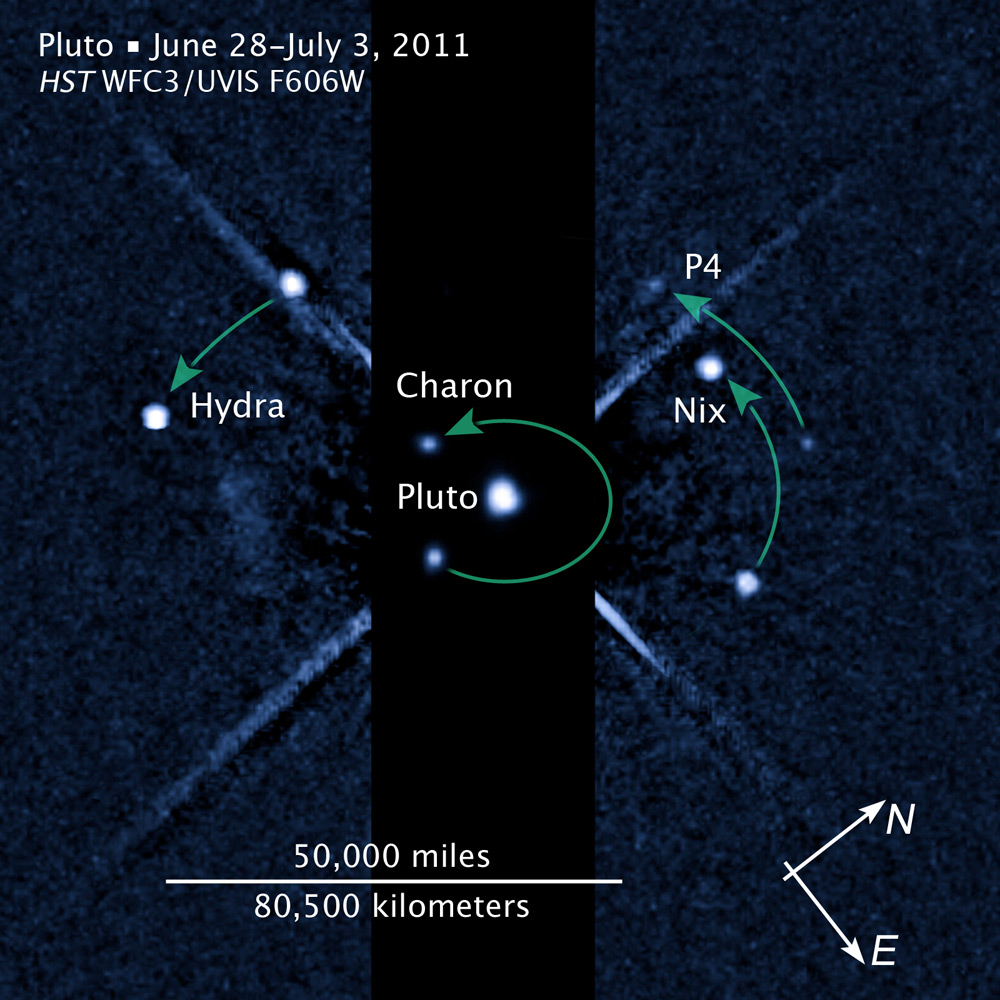
A new moon has been discovered orbiting Pluto, scientists announced today (July 11).
Researchers using NASA's Hubble Space Telescope found the moon, bringing the number of known Pluto satellites to five. The discovery comes almost exactly one year after Hubble spotted Pluto's fourth moon, a tiny body currently called P4.
"Just announced: Pluto has some company -- We've discovered a 5th moon using the Hubble Space Telescope!" Alan Stern, of the Southwest Research Institute in Boulder, Colo., announced via the Twitter social networking website today.
Stern is principal investigator of NASA's New Horizons spacecraft, which is scheduled to fly by the Pluto system in 2015. It will be the first mission ever to visit the dwarf planet.
Pluto's other four moons are Charon, Nix, Hydra and P4. Charon is by far the largest, measuring 648 miles (1,043 kilometers) across. Nix and Hydra range between 20 and 70 miles (32 to 113 km) wide, while P4 is thought to be 8 to 21 miles (13 to 34 km) across.
The new moon looks a lot more like P4 than like Charon.
"It's smaller than P4," Stern told SPACE.com.
Sign up for the Live Science daily newsletter now
Get the world’s most fascinating discoveries delivered straight to your inbox.
"We're finding more and more, so our concern about hazards is going up," he added, referring to the collision risk New Horizons will face when it cruises by Pluto in a few years.
Charon was first spotted in 1978, 48 years after the discovery of Pluto. Nix and Hydra were found by Hubble in 2005.
Pluto orbits 3.65 billion miles (5.87 billion km) from the sun on average, about 39 times farther away than Earth does. For more than 75 years after its discovery, the object was regarded as a full-fledged planet, but things changed in 2006.
That year, the International Astronomical Union reclassified Pluto a dwarf planet, since it shares orbital space with lots of other objects out in the Kuiper Belt, the ring of icy bodies beyond Neptune.
Follow SPACE.com senior writer Mike Wall on Twitter @michaeldwall or SPACE.com @Spacedotcom. We're also on Facebook and Google+.











